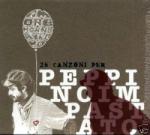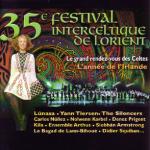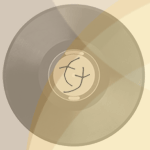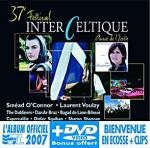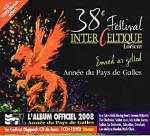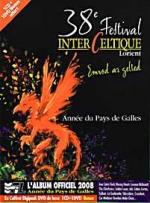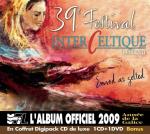Shop

Sardinia is without a doubt the Italian region that has most preserved its cultural and expressive traditions. In fact, the island is one of the richest areas of Europe in terms of its music and dance, deeply rooted and perceived as a collective, local patrimony. For some time, this awareness has transformed such music and dance into emblems of the Sardinian identity, to live and display to others;The reasons for this tendency of conservation and loyalty to native expressive forms are numerous: the various external dominations of the island, the abandonment caused in part by the slight consideration of the island’s resources by her European rulers, the prevalence of a closed economy, tending towards agro-pastoral subsistence; all these factors have produced a historic isolation and a consequent cultural insularism. Of course, the state of conservation is not uniform; there are more conservative areas such as the Barbagia and the Nuorese, while there are more dispersive and dynamic areas such as the Gallura and the Campidano cagliaritano. This second Sardinian musical anthology follows the same criteria as the first cd: It seeks to offer an attentive and scrupulous panorama of the traditions and typological variety of dance of the various areas of the island. At the same time, in presenting the various dances, it seeks to present a panorama of instruments, of playing styles, and repertories characteristic of the island; The recordings come from decades of field research during local festivals, visits in homes of musicians, folk festivals, receptions among friends and gatherings in the wine cellars. In music and dance Sardinian distinguish themselves in their technical and executive ability compared to other regions; the generally high quality of many musicians demonstrates the elevated vocation and dedication that the populations of the island nurture for music and dance: interest in any type of musical instrument is developed in full. This tendency towards musical perfection derives from various factors: to begin with, such ability in music; dance is considered a fundamental element of “being Sardinian”, in other words, to feel individually and collectively Sardinian. Furthermore, the number of celebrations, public and private gatherings based on music and dance create an important internal market that allows the most capable musicians to make a living through music or at least draw economic support from their craft. This internal market inevitably creates mechanisms of competition, the search for new “piazze” in which to perform, encourages an ever-greater development of proficiency, specialization of repertory, development of new expressive forms, even though they remain within the parameters recognized by the tradition as authenticand indentifying, even within this continuous micro-transformation. The balentìa, or ability, of Sardinians in these expressions supplies also psychological gratification, immersion and prestige in the social group to which they belong; There is wide-spread awareness of this technical ability, which has transformed itself in recent decades in ostentation and showmanship in the public arena. Sardinian responds to the need for dance (but also singing of poetry and singing with guitar) through the formation of numerous amateur or semiprofessional music groups and an intense program of performances and parades in traditional costumes, concerts, and folkfestivals.
General characteristics
of Sardinian Dance
The panorama of traditional Sardinian dances is diversified, even though a large part belong to several principal veins, such as the ballo tondo legato, in which the dancers tightly lock arms and form a circle, even when dancing as a couple or in small groups. The predominant characteristics of native dances (or those recognized as “Sardinian”) are the following:
- Modular structure of the dance, with the relationship between dance and music based on Kinetic formulas (pikkiadas) of the steps; these models or patterns principally distinguish one dance from another; -the constant connection between dancers;either by hand or by locking arms the balladores are joined together.
- The extreme dynamism of the feet compensated by the quite vertical position and contained dynamism of the upper body, if not areflex of the sussultatory movement.
-The presence of dance groups joined together (or in the campidanese area, couples or small groups joined together).
- The prevalence of circular choreography with balladores joined in anintroverted position, with a tendency of the carol to move in a clockwise direction.
- The creation during the dance of a vertical sussultatory internal rhythm, especially coinciding with the most lively parts of the musical performance; to generate such stylistic characterization it’s important that the musical repertory includes an extraordinary richness of modulated notes that stimulate in the dancers the fragmentation of the base rhythms.This characteristic is most common in the central areas of the island.
Musical instruments
Among the instruments featured on the disc, we present several specifically Sardinian (launeddas and affuente) and others with greater diffusion among the various ethnicities of the planet.
- Sas launeddas (benas, bidulas, bisonas, ecc.): Three diverging clarinet pipes of unequal length made from simple reed or battente (that iscarved in a minor segment called cabizzinu inserted into each reed and
held by the musician in the mouth), su cunzertu is structured in a smaller pipe and two other reeds joined together, one for accompaniment and one for harmony and one other which functions as a continuous drone. The two modulating reeds have 4 + 1 holes.
- Pipiolu or pipaiolu, sulittu o suettu:
Straight flute made from reed, with 3-4 front holes and 1 rear hole.
- S’affuente: Small tray used to gather offerings, used for friction or with beats.
- Organetto (organettu, sonettu, ecc.): small accordion, diatonic, with 8 or 12 base notes, industrial production coming primarily from le Marche and Abruzzo.
- Sonazzos (marrazzos, matracca,
ecc.). A variety of cowbells or sheep bells, in various sizes, worn on the belts or the backs of carnival costumes, creating various sequences of rhythmic sounds.
- Campanas: Church bells were used (today rarely) to guide a large number of dancers in the piazza below the church bell tower.
Our Playlist
Our olaylist on Spotify, dedicated to P
re Minimalism, Minimalism and Post Minimalism.




















